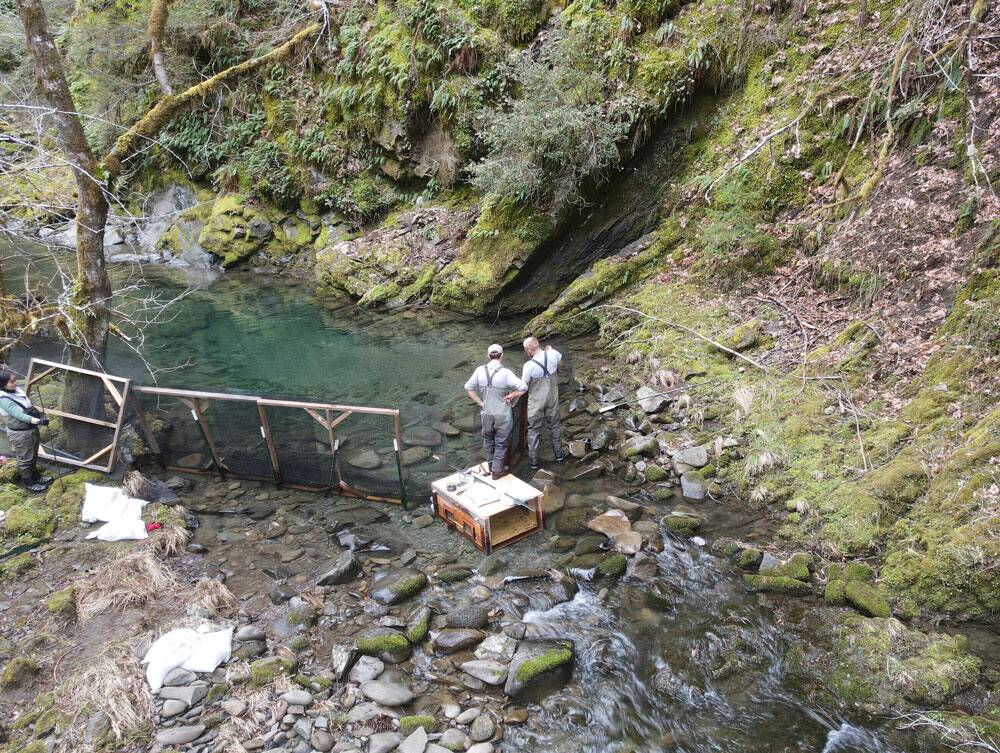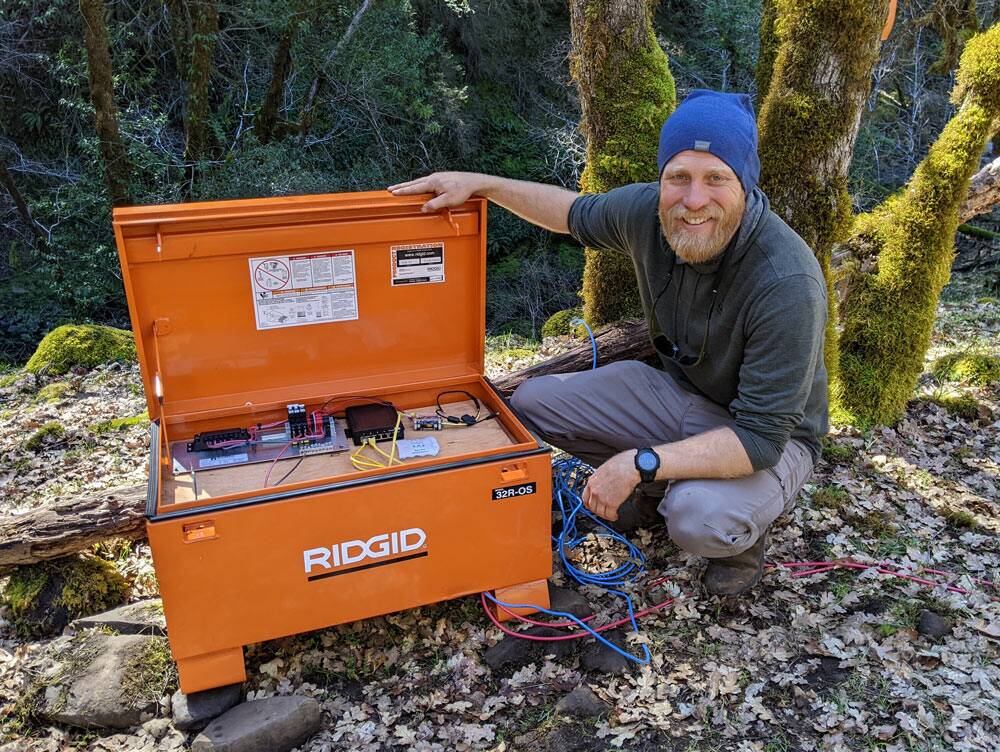Suppression of Invasive Pikeminnow Populations Could Help Native Eel River Salmonids
Native fish in the South Fork Eel River have long faced many threats including overfishing, mechanized logging, dams, water diversion, and drought. Today they have another threat to contend with: impacts from invasive Sacramento pikeminnow!
Pikeminnow suppression has become a key priority for Eel River salmonid recovery. Fisheries researchers at Cal Poly Humboldt are exploring a novel approach to pikeminnow suppression, experimenting with modifying the sex chromosomes of hatchery-reared pikeminnow, initially in a controlled laboratory setting. CalTrout is thrilled to help fund the university’s graduate-student research that may eventually contribute to eliminating this invasive species from the Eel River.
Since their introduction in 1979, pikeminnow have spread throughout the Eel River basin. Now pikeminnow compete with, prey on, and alter behavior of juvenile salmonids – all of which impacts salmon recovery. Every native fish in the Eel River basin is at risk of pikeminnow predation, but federally threatened Chinook salmon, coho salmon, and steelhead juveniles are especially vulnerable during their migration through the mainstem of the Eel River. Salmon populations have declined precipitously due to human-caused impacts, and the current pikeminnow predation has a disproportionate effect on the growth and survival of these young fish.
To give these fish a fighting chance, researchers Dr. Andre Buchheister and Dr. Rafael Cuevas Uribe, from Cal Poly Humboldt Fisheries Department, have proposed the “Trojan Y Chromosome” (TYC) strategy. The TYC method would raise and introduce hatchery-reared pikeminnow with a modified sex chromosome (female-YY and male-YY) into the river to skew the sex ratio through successive reproductive generations, and eventually lead to population decline toward extirpation. After a few generations of these hatchery-reared fish reproducing with each other, their population would skew largely towards male. The goal is to reduce the reproductive rate of pikeminnow — not to alter the genome of the population. Eventually, this could rid the Eel River entirely of female pikeminnow, meaning the fish would no longer be able to reproduce.
Dr. Buchheister and Dr. Cuevas Uribe were recently featured in the Cal Poly Humboldt Now for their proposed research on altering male pikeminnow. Read the full article below to hear from the researchers.
Click to read the article
The TYC strategy is still in development and will be tested safely in a lab before modeling in the natural world, but it presents a hopeful future for native fish in the Eel. Additionally, the strategy would fit into a three-year plan for CalTrout’s North Coast Science and Monitoring Program.
North Coast Science and Monitoring Program
In close partnership with UC Berkeley, CalTrout’s North Coast Science and Monitoring Program is led by UC Berkeley post-doc researcher and CalTrout collaborator Dr. Gabe Rossi. The objective of this program is to pioneer applied science in the North Coast with an emphasis on understanding and recovering the drivers of salmon production.
With partners at the Wiyot Tribe, California Department of Fish and Wildlife, and Stillwater Sciences, the North Coast Science and Monitoring Program is engaged in the first ever salmon acoustic telemetry study in the South Fork Eel. This study tracks the movements and survival of juvenile salmonids from their natal streams to the estuary. We are also working with researchers at University of Nevada Reno to implement novel, machine-learning video monitoring of juvenile salmon in the Eel River. In the Eel River estuary, we are studying river food webs to understand the drivers of salmon growth. In spring of 2023, we will install and operate the newly funded South Fork Eel River fish weir to further pikeminnow suppression and continue to monitor recovering salmon runs.
All these efforts will be synergistic with the Cal Poly Humboldt led TYC strategy for pikeminnow suppression in the South Fork Eel River. Eventually this technology can be expanded to the whole Eel River basin, especially in the upper mainstem as Scott Dam and Cape Horn Dam decommissioning goes to implementation.
Simultaneously, CalTrout is busy advocating for the removal of Scott Dam and Cape Horn Dam, two obstructive barriers on the Eel River that when removed will open hundreds of miles of crucial habitat to native fish. We have a vision for a free-flowing and healthy Eel River, and we look forward to the research partnerships and sound science that will help us achieve that reality.
This research is made possible with support from generous individuals and grants from the California Department of Fish and Wildlife, Bureau of Land Management, and the Resources Legacy Fund. Learn more about CalTrout's North Coast Science and Monitoring Program.


Cover Photo: South Fork Eel River. Credit: Mike Wier.






